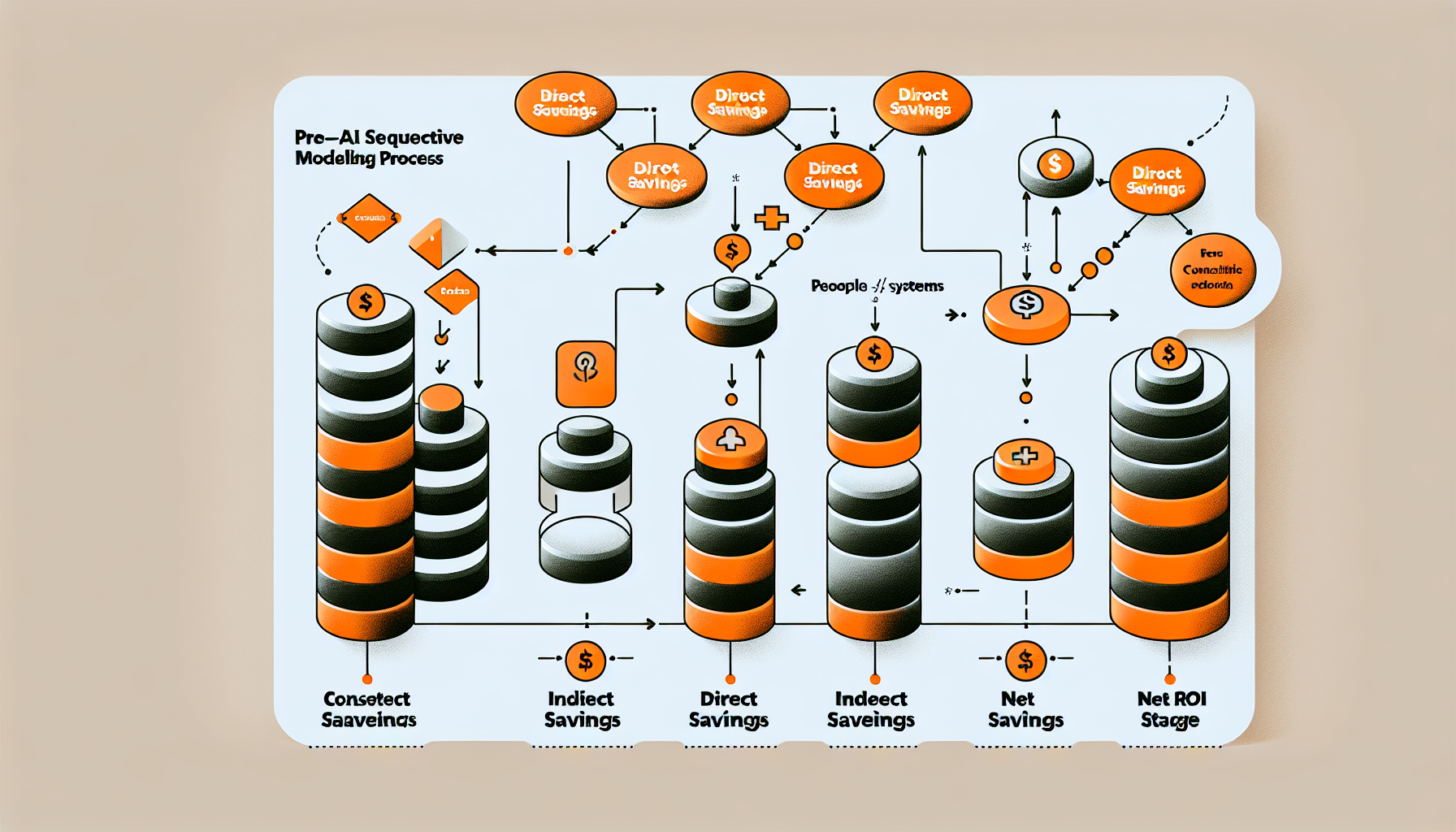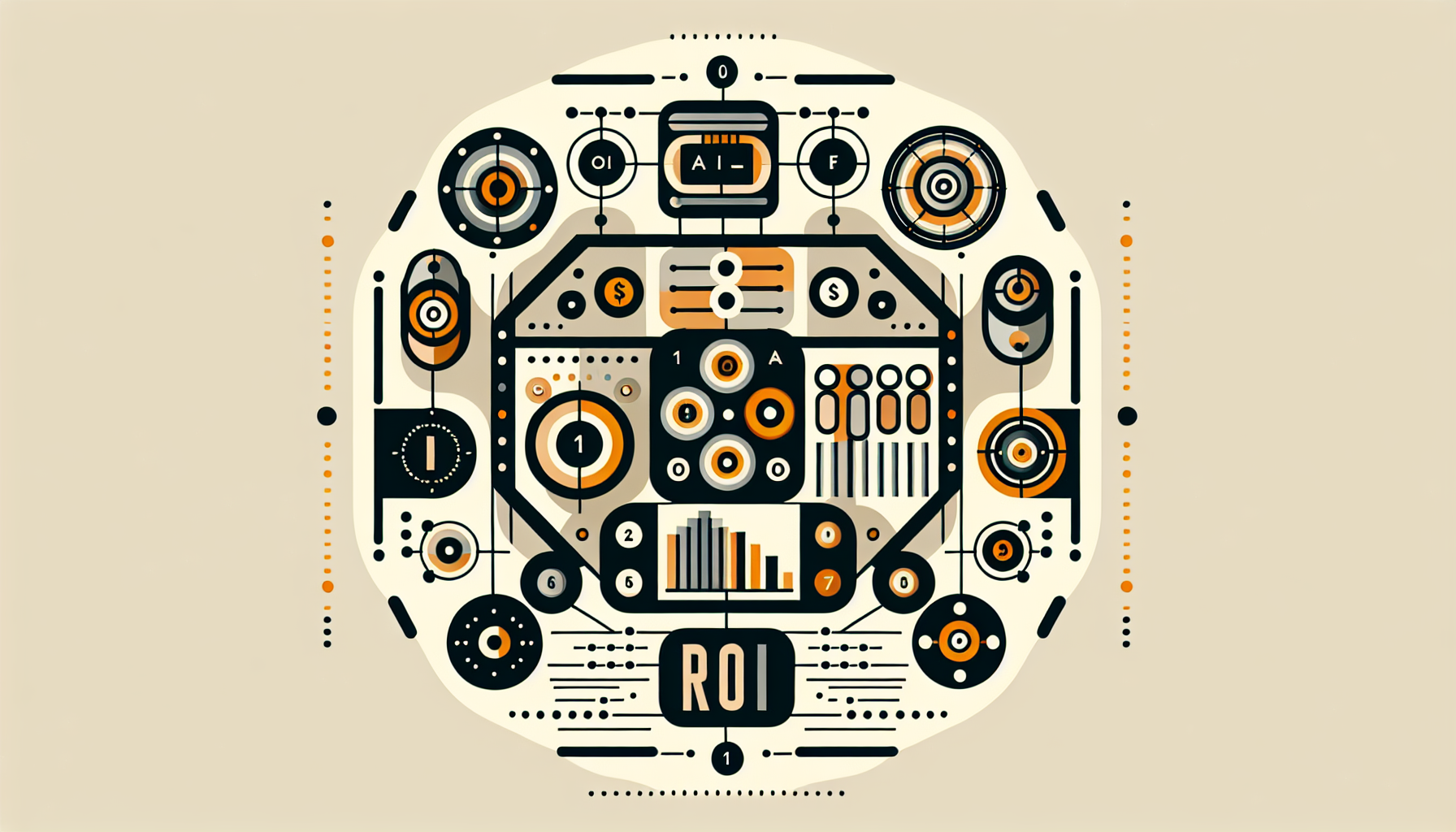The CFO’s Guide to AI ROI: A Framework for Modeling ‘Cost-to-Serve’ Reduction
The directive from the board is clear: “We need an AI strategy.” As a finance leader, you’re tasked with navigating the hype, finding the substance, and—most critically—building a business case that stands up to scrutiny. Yet, most proposals you see are filled with vague promises of “transformation” and “efficiency gains,” lacking the hard numbers you need to confidently approve a seven-figure investment.
The core problem is a credibility gap. Traditional ROI models often crumble under the complexities of AI, struggling to quantify intangible benefits or account for the true total cost of ownership. You’re being asked to sign off on a forecast, but you haven’t been given a credible formula.
What if you could ground the abstract potential of AI in the familiar, rigorous language of financial modeling? This guide introduces the “Cost-to-Serve Reduction” framework—a practical method for any finance leader to translate the operational impact of AI into a defensible, auditable financial model. It’s time to move the conversation from “what if” to “how much.”
Beyond the Hype: Why Traditional ROI Models Fail for AI
The pressure to adopt AI is immense, yet the path to justifying it is notoriously murky. Research into what finance leaders are searching for reveals a clear pattern: a move from “what is the business case for AI?” to “how do I model AI ROI for the CFO?” This signals a widespread need for a practical, number-driven approach.
The current landscape of advice often falls into two unhelpful camps:
- High-Level Strategy: Top consulting firms provide excellent strategic frameworks, like BCG’s “string-of-pearls” approach, focusing on transformational value. While inspiring, they leave you with the strategic “why” but not the practical “how” to build the financial model.
- Vendor-Specific ROI: AI software vendors offer compelling case studies for their solutions, like saving 40,000 hours on AP processing. While useful, these are naturally biased and don’t provide a universal, vendor-agnostic framework you can apply across your entire organization.
The result is that CFOs are left trying to bridge an enormous gap. You know you can’t just apply a generic ROI formula, as it fails to capture the unique cost and benefit drivers of AI, such as data integration complexity and the long-term value of risk mitigation.
The Solution: A ‘Cost-to-Serve’ Framework for AI Investment
Instead of getting lost in abstract benefits, the most effective way to model AI’s financial impact is to focus on a concept every CFO understands: cost. Specifically, the cost-to-serve for any given business process.
“Cost-to-serve” is the total, all-in cost required to execute one unit of a specific operational task. Think of it as:
- The total cost to process one vendor invoice.
- The total cost to onboard one new employee.
- The total cost to resolve one customer support ticket.
By calculating this unit cost before AI and modeling it after AI, you can create a clear, compelling, and financially rigorous business case. This approach transforms the conversation from speculating about efficiency to calculating concrete, per-unit cost reductions that scale across the business.

This framework is powerful because it’s built on principles you already use for operational analysis, making it instantly credible to you, your executive team, and the board.
Your Step-by-Step Guide to Modeling AI-Driven Cost Reduction
Building this model is a systematic process of deconstructing a workflow, assigning costs to each component, and then forecasting the changes an AI solution will bring.
Step 1: Establish Your Pre-AI Baseline
You cannot prove a reduction without first defining your starting point. The goal here is to accurately calculate the current cost-to-serve for a target process.
- Identify Labor Costs: This is more than just salary. Calculate the fully-loaded hourly cost for each employee involved in the process (including benefits, taxes, and overhead). Track the exact time (in minutes) they spend on one unit of the task.
- Factor in Systems Costs: Include the per-unit cost of software licenses, server space, and any other technology currently used in the process.
- Quantify Error Costs: This is a crucial and often overlooked metric. What is the financial impact of human error? For invoice processing, this could be the cost of late payment fees or the labor cost of rework. For customer service, it could be the cost of customer churn due to a slow or incorrect resolution.
Example: Baseline Cost to Process One Invoice
- AP Clerk Time: 15 minutes @ $40/hr (fully loaded) = $10.00
- System Costs (ERP, etc.): $0.50
- Error Rate Cost (3% of invoices have errors requiring 10 mins of rework): 3% * (10 mins @ $40/hr) = $0.20
- Total Pre-AI Cost-to-Serve = $10.70 per invoice
Step 2: Model the AI-Enabled Future
Now, model the same process with AI integrated. The goal is to quantify the specific points of leverage where AI reduces time, eliminates steps, or improves accuracy.
- Direct Cost Reductions: This is the most straightforward calculation. If an AI agent can automate data entry and 3-way matching, the AP clerk’s time might drop from 15 minutes to just 2 minutes for review and approval.
- Indirect Cost Savings: AI’s impact on accuracy can be profound. If the AI tool reduces the error rate from 3% to 0.1%, the associated rework and penalty costs shrink dramatically.
- Second-Order Benefits: Consider the value of speed. If invoices are processed 80% faster, can you now capture more early payment discounts? This is a direct, quantifiable revenue gain enabled by operational efficiency.

Step 3: Uncover the True Total Cost of Ownership (TCO)
A credible business case must honestly account for all costs, not just the software license. Failing to do so is a common pitfall that erodes trust and derails projects.
CFO Pitfall: Underestimating integration and change management costs is one of the most common reasons AI projects fail to deliver their modeled ROI.
Your TCO model must include:
- Software & Infrastructure: The recurring license fees and any necessary hardware or cloud computing costs.
- Implementation & Integration: The one-time cost to integrate the AI with your existing systems (like your ERP) and configure the workflows.
- Data Preparation: The potential cost of cleaning, labeling, or preparing your data for the AI model.
- Training & Change Management: The cost of training employees to use the new system and adapt to new processes.
- Ongoing Management: The cost of personnel needed to monitor, maintain, and refine the AI system over time.
Step 4: Calculate Net Benefit, ROI, and Payback Period
With all the components in place, the final calculation is straightforward.
- Calculate Per-Unit Savings: (Pre-AI Cost-to-Serve) – (Post-AI Cost-to-Serve)
- Calculate Annual Gross Savings: (Per-Unit Savings) * (Annual Volume of Units)
- Calculate Net Benefit: (Annual Gross Savings) – (Annualized TCO)
- Determine ROI and Payback: Use the net benefit and initial investment figures to calculate your key metrics like ROI, payback period, Net Present Value (NPV), and Internal Rate of Return (IRR).
From a Single Project to a Strategic Program
The most successful AI transformations don’t happen in one giant leap. They follow a “string-of-pearls” model: a series of well-defined, interconnected projects where the success of one builds momentum and helps fund the next.
Start with a process that is high-volume, rule-based, and causing measurable pain—like invoice processing. Use the Cost-to-Serve model to prove the ROI definitively. The savings and credibility you gain from this first “pearl” become the capital—both financial and political—to tackle the next challenge, whether it’s in customer service, HR, or supply chain management.
Developing this multi-year roadmap is essential for scaling AI responsibly. It ensures that investments are sequenced logically and build upon each other, creating a compounding effect of value across the enterprise. This programmatic view is the hallmark of a mature AI consulting and strategy.
Presenting Your AI Business Case to the Board
When you present your findings, you are telling a story backed by numbers.
- Lead with the “Before and After”: Start with the baseline. “Today, it costs us $10.70 and takes 15 minutes to process a single invoice. Our model shows that with AI, we can reduce that to $2.50 and 2 minutes.”
- Frame it Strategically: Connect the cost savings to higher-level goals. “This isn’t just about saving money in AP. It’s about freeing up our team to focus on strategic vendor management, improving our cash flow with early payment discounts, and building a more resilient financial operation.”
- Address Intangibles Qualitatively: Acknowledge benefits like improved employee morale (by eliminating tedious work) and faster decision-making. While not in the core ROI formula, they are critical parts of the value narrative. Aligning the leadership team on these possibilities is often a valuable first step, which many organizations achieve through focused corporate AI workshops.
Frequently Asked Questions (FAQ) for Finance Leaders
What if our company data isn’t perfect?This is one of the most common concerns, but it’s not a dealbreaker. You don’t need perfect data to start. Begin with a process where the data is structured and reliable (like invoice data). The success of this first project can then justify the investment needed to improve data quality in other areas.
How do I choose the right first project?Look for the intersection of high impact and low complexity. The ideal starting point is a process that is repetitive, high-volume, and rule-based. Accounts payable, expense report processing, and certain types of customer service inquiries are classic examples.
What’s the difference between AI and simple automation (RPA)?Think of it this way: Robotic Process Automation (RPA) is great at mimicking human actions for structured tasks, like copying data from one system to another. AI goes further; it can understand unstructured data (like reading an email or a PDF invoice), identify patterns, make predictions, and learn over time. Many advanced solutions combine both.
How do we measure the ROI of AI in creative or marketing departments?The Cost-to-Serve framework still applies, but the “unit” changes. You can model the cost to generate a marketing campaign, analyze a set of competitor data, or create 100 variations of an ad. The principles of measuring time, systems, and outcomes remain the same when evaluating AI in marketing and sales, allowing you to quantify gains in speed, personalization, and campaign performance.
Your Bulletproof AI ROI Checklist
As you build your business case, use this summary as a guide to ensure you’ve covered all the critical components for a credible, auditable model.

By shifting from ambiguous promises to a rigorous, data-driven “Cost-to-Serve” model, you can move from being a gatekeeper of AI investment to the strategic leader who champions it with confidence. This framework provides the financial discipline necessary to not only justify AI projects but to ensure they deliver real, measurable value to the bottom line.

